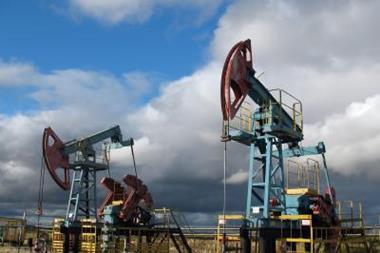Developing futures scenarios is a strategic risk management technique for considering what could happen in the future and its possible impact on a company’s objectives. The goal is to establish the basis for managing uncertain or unknown events.By Scott Randall
Highly improbable events have generally been neither predictable nor well managed using traditional quantitative risk management methods. Events such as successively occurring 100 year floods and hurricanes add fuel to the arguments that these extreme events are not only unpredictable, but unmanageable. In his 2007 book, The Black Swan, The Impact of the Highly Improbable, Nassim Nicholas Taleb argues that managers of risk should ignore statistical theory, historical evidence and current events, and instead limit their efforts to dealing with unknown extreme events he calls black swans. However, nowhere does he provide good guidance on how to deal with these black swans!
Taleb is correct that extreme events cannot be predicted. However, he is wrong to insist that their impact cannot be managed using systematic, albeit qualitative, uncertainty management techniques. One such a technique is called “futures” scenario development. It is drawn from the field of strategic planning, but typically, scenarios are most valuable in assessing the following categories of uncertainties:
• Pandemics, world terrorism and natural disasters
• Political events
• Regulatory changes
• Uncertainties behind entry into foreign markets
• The launch of a new technology
An example at the end of this article illustrates how futures scenarios can help an oil and gas company plan for and manage the impact of one type of uncertainty: political changes in Latin America.
Risk, uncertainty and the unknown
Colloquially, people often refer to unknowns with potentially negative outcomes, as risks. More precisely, risks are only one of the levels or degrees of information quality along a spectrum of assurance ranging from ignorance to control as shown in Figure 1.
Risk management involves identification and assessment of both the likelihood and impact of discrete scenarios that link events together. As such, understanding risk is a long way up the ladder of achieving effective control over an event. In contrast, with catastrophic events we usually do not know the probability, nor can we accurately assess the consequences in advance.
As such, catastrophic events fall more often into the categories of uncertainty, ambiguity and ignorance – not risk as described above. Ignorance in this sense need not be a pejorative word. After all, each of us must admit in the fields of science and technology, there are areas where we know so little that our knowledge falls into the famous category of “unknown, unknowns”! Finally, in contrast to risk, uncertainty is best dealt with by considering more of a continuous, instead of a discrete, distribution of events and/or scenarios.
“The goal is not to obtain an accurate picture of tomorrow, but to establish the basis for management of uncertain or unknown events
To illustrate this distinction between risk and the other levels of assurance, we need only consider one common technique for characterising health and safety risk: fault or event tree scenarios that graphically illustrate the probability and the consequence of a series of specific events. In the field of financial risk management, historical prices are often projected forward to calculate the value at risk (VAR) of a portfolio. In both situations, the risk practitioner develops discrete projections based on historical data to design controls against a repeat of those specific events. These projections also use market research to select the most analogous historical data.
This is the practice of risk management that Taleb says is pure folly when dealing with catastrophic events. He may be correct. Current financial risk management thinking is that extreme events cannot be effectively managed using standard VAR calculations, which rely on assumptions of normality all the way out to the infinite tails of their distributions. In reality, tail events tend to be much “fatter” (or more frequent) than the normal distribution would indicate. Figure 2 illustrates where risk management/market research and strategic planning tools are most appropriate.
Fat tail event management requires a different tool set, outside the bounds of normal statistical theory or technical analysis. Possible avenues for answers to this problem can come from either advanced mathematics or strategic planning. There has been much mathematical research to develop advanced statistical models, but advanced statistical and mathematical techniques are still neither well understood nor accepted techniques in mainstream business. They certainly do not have a good record of managing catastrophic risk on Wall Street.
This leaves us with strategic planning tools – and in particular, futures scenario analysis – to deal with fat tail events. Because strategic planning techniques are conceptually more understandable and intuitive than the mathematical approach, they have the added advantage of gaining acceptance in broader risk management circles. Additionally, they have a track record of success in military circles from where they originate.
Thus, instead of risk management to control discrete projections, I would argue that we should use uncertainty management based on continuous futures scenarios to set boundaries on the uncertainty of catastrophic events and, in this way, form the basis for emergency response and contingency plans.
Futures scenarios
Developing futures scenarios is a strategic risk management technique for considering what could happen in the future and its possible impact on a company’s objectives. The goal is not to obtain an accurate picture of tomorrow, but to establish the basis for management of uncertain or unknown events. Futures scenarios incorporate changes in many different drivers at once to create new “futures”. The focus of this discussion is to describe how to develop, “futures scenarios” for catastrophic events. Author and futurist Peter Schwartz states in his seminal 1991 book, The Art of the Long View, that scenarios are not predictions, but rather stories about the way the world might turn out tomorrow.
Additionally, scenarios are more than simply the high, low and base case approach common to engineering or economic analysis, because the high and low cases are often no more than variants of the base case, rather than real scenarios. Instead, the scenarios might need to be “out on the tail” in order to capture the realistic spectrum of possible outcomes. Another requirement is that they capture the imagination of the audience to break through their barrier of disbelief.
These business stories must be believable and have a basis in fact to be effective. Balancing the visionary and artistic with the realistic and factual is difficult because it involves both right and left brain thinking. One additional challenge for scenario planning is having a systematic process for scenario development – effectively answering the question, “Where do
I begin?” Thus, futures scenario development is the process of visualising, articulating and communicating fantastic, but plausible, stories in a systematic and repeatable manner.
Beginning
The business decision is the starting point and the kernel of the scenario development process, and often other tools and techniques are woven together with scenario planning to arrive at a decision. For example, a decision to enter into a new foreign market may require a political risk checklist to guide an early brainstorming discussion. The decision to invest in a new technology might involve an expert guided, Delphi, session to flush out critical uncertainties, which in turn feed into the scenario process.
“There are known knowns. There are things we know that we know. There are known unknowns. That is to say, there are things that we now know we don’t know. But there are also unknown unknowns. There are things we do not know we don’t know.
Former US Secretary of Defence Donald Rumsfeld, 2002
After identifying the strategic decision, you need to research a solid basis of background facts to have a credible, realistic foundation for your business story. As a minimum, the analyst should establish a solid foundation of external information about customers, suppliers and competitors, as well as social, political and economic trends affecting the decision. Best practice is to have experienced market researchers gather this information using surveys, reliable secondary data sources and information testing and validation techniques.
Visualisation, articulation and communication are the key to developing robust scenarios. Projecting into the future requires a certain degree of right brained thinking, and to be communicated effectively, these projections must be moulded and articulated into stories with different themes.
It is tempting to develop just three stories, but that seems too much like the high-low-base case format often used for management decision making. It encourages decision makers to select the base case as the most likely or most probable and then forget about the high and low cases! By doing this, you are encouraging forecasting rather than a risk-based approach.
By contrast, the purpose of futures scenarios is to discourage forecasting by presenting the spectrum of possibilities, more of a risk based approach. This requires careful formulation of mutually exclusive themes – each with its own catchy, but descriptive, title. This theatrical technique is a good way to communicate the essence of each theme or to capture the imagination of the audience, so they will suspend their pre-conceptions.
Scenario building – a roadmap
One of the main challenges of building scenarios is knowing where and how to start. The scenario building process must begin with a question and it must be based upon solid factual information, but beyond this, what is a step-by-step process for developing scenarios?
Catastrophic event application for scenarios
An appropriate application of the futures scenario analysis is the risk assessment of potentially large consequence, difficult to quantify uncertainties in oil and gas ventures. Political uncertainty, often termed political risk or country risk, is an insurable hazard for many energy companies that can, if not well managed, result in expensive consequences, ranging from changes in royalty provisions to the expropriation of assets.
Consider the effect of political events on a fictional international oil and gas company with crude processing assets in Venezuela, named San Felipe Resources. The company’s senior managers find that estimating the likelihood and impact of political or regulatory changes is nearly impossible, yet they must make a decision.
Walking through our scenario development process, they might first identify the decision of whether to expand or divest of facilities in country as the focal issue. Next, they would gather market intelligence to gain a perspective on the current situation, followed by a determination of the key drivers of political and regulatory threats to their operations, factors such as a worsening macroeconomic situation, a rapidly depreciating currency or even a change in the personal security situation for local employees. They would assemble these drivers into three or four narratives, or scenarios which act as believable business stories.
Often it is useful to label each narrative with some entertaining title to distinguish each readily. When I last did this exercise, I named my three scenarios Long Live the Cacique, Leadership by Committee and Return of the Puppet Rulers. The purpose of these scenarios is not to try to predict the future, but rather to provide the boundaries or frame conditions around an entire range of events that, although not discretely identifiable, may occur.
The final step is to look not just at one, but all scenarios in this case to draw out commonalities across them. When I performed this analysis in 2004, two of the common factors were a deteriorating labour situation, and worsening or stable corporate governance. This prompted a recommendation for divestment and an increase in the level of political risk insurance. What is important is that the uncertainty management did not rely on one discrete scenario, but rather an analysis of the commonalities across what I consider continuous scenarios to support a management decision.
Scenario planning is not an easily mastered technique. To be successful, it requires competence in market research, strategy development and facilitation, as well as a global perspective and considerable practice. Furthermore, those who have not worked in strategic planning often do not appreciate its value. However, it is conceptually simpler and more widely accepted than mathematical approaches for dealing with extreme events. Public companies and non-governmental institutions, ranging from Shell International to the World Economic Forum, have used futures scenarios to develop their strategy under uncertain conditions. It is time they are added as a standard uncertainty management tool to every risk manager’s toolbox.
Postscript
Scott Randall is an enterprise risk manager for Lloyd’s Register North America. He is author of a new book on risk and uncertainty management entitled, Energy, Risk and Competitive Advantage, the Information Imperative, published this year by Pennwell Books.
scott.randall@lr.org.
www.lr.org




















No comments yet